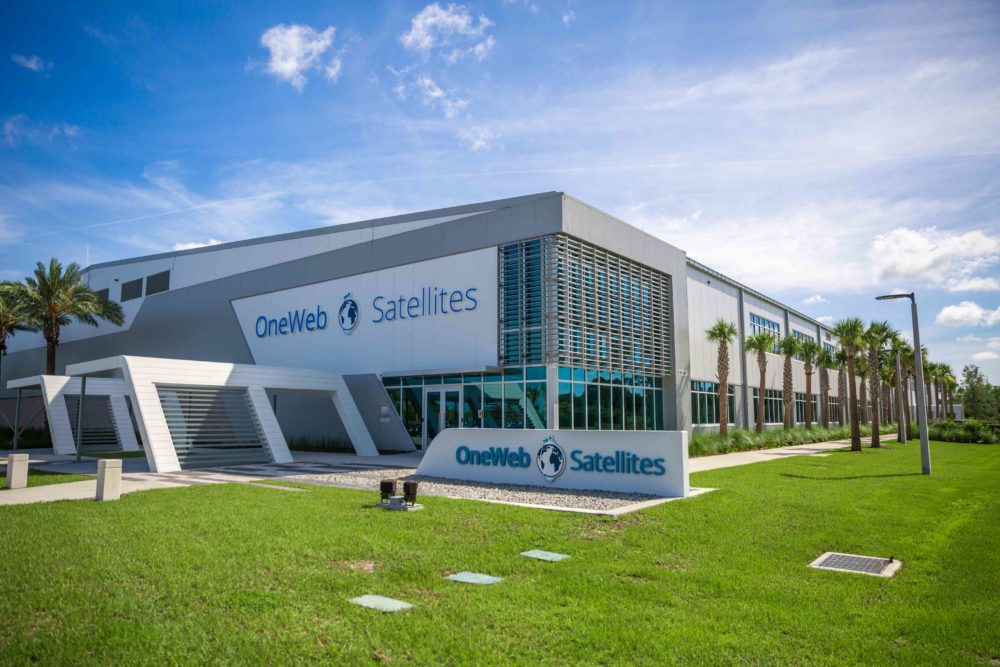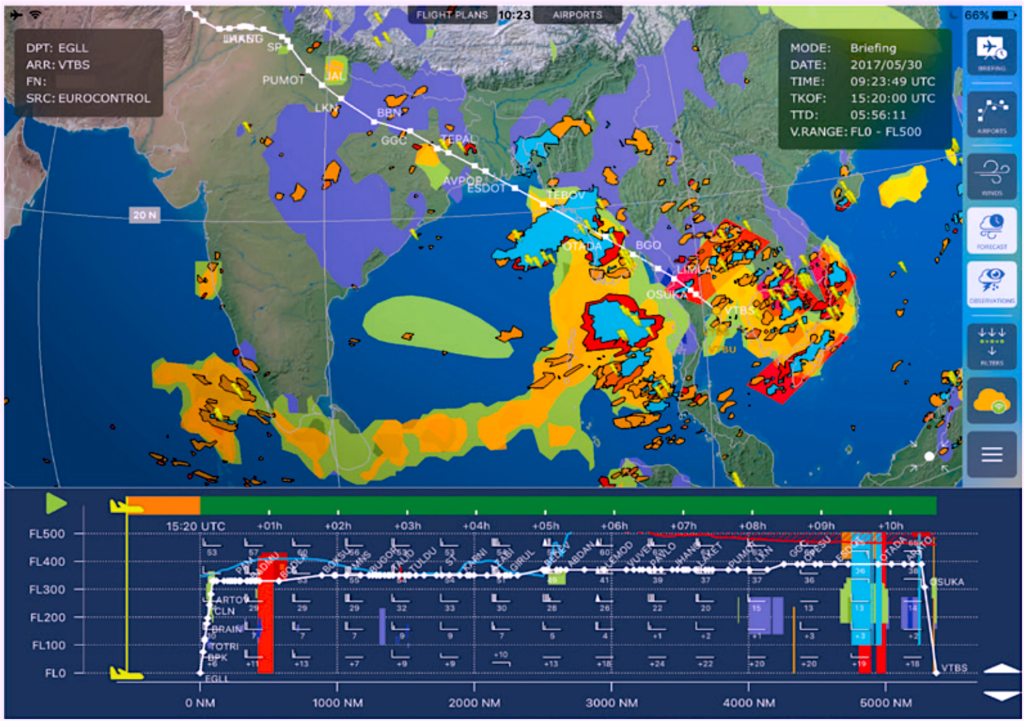
GCAS 2019: Airlines Navigate Connected Business Models, Apps and Services
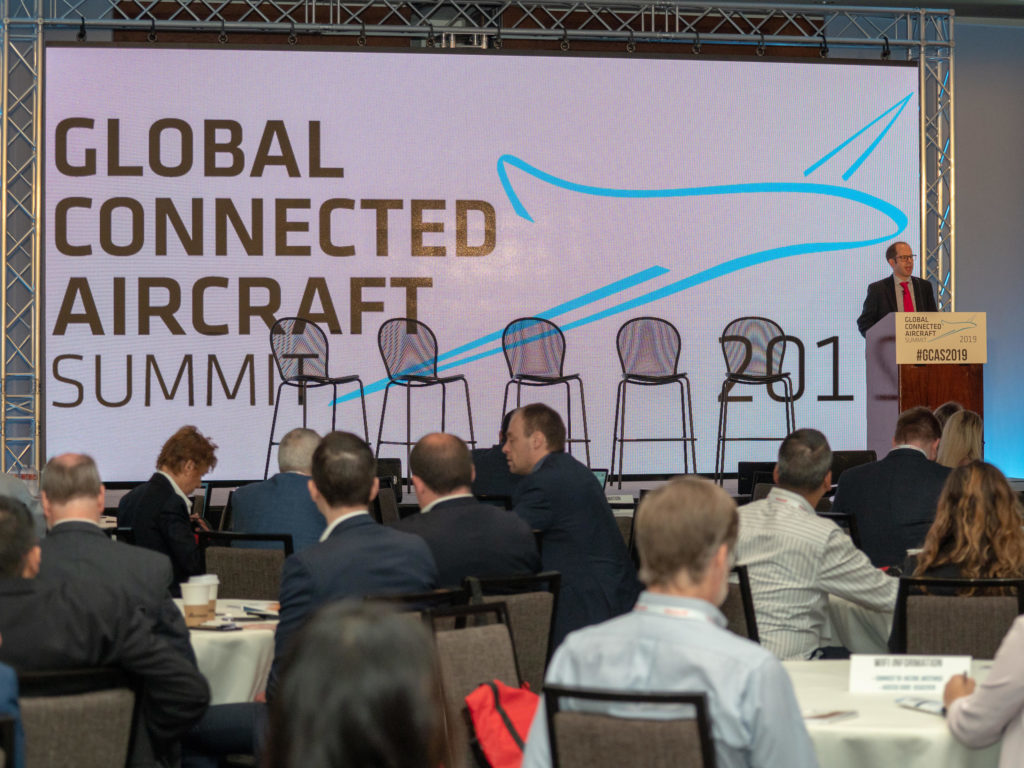
In 2019, in-flight (IFC) connectivity technology is at a generational standstill, leaving airlines and the service providers and equipment suppliers they work with to optimize the business models, data transmissions and performance behind what is already flying today.
During the 2019 Global Connected Aircraft Summit, managers, directors and executives from the passenger experience, flight operations and engineering divisions of 10 of the world’s largest airlines provided in-depth perspectives on growing pains they’re experiencing and where they want to go in the future with the IFC technology they’re currently operating and maintaining.
Optimizing Cabin IFEC and Business Models
One of the biggest discussion points from a cabin in-flight entertainment and connectivity (IFEC) perspective discussed across all of the panels at GCAS this year was whether or not all airlines will eventually make access to in-flight connectivity free.
What are the main barriers blocking widespread deployment of free access to in-flight Wi-Fi?
It comes down to the intertwined economics behind who makes the antennas, modems and wireless access points that airlines actually use to provide connectivity to passengers and who actually operates the service that gives those same passengers the bandwidth and capacity to use that connection. Each of these players, the airline, service provider and equipment maker needs to make a profit. The problem is, most airlines still have no way of knowing how many passengers are actually going to pay for IFC access on a given flight.
Another major roadblock to the use of a free business model is the ongoing inconsistency of the performance of most IFC networks.
Norman Haughton, director of in-flight entertainment and connectivity product and analytics at Air Canada said his airline, like most others, still has not perfected the business model behind operating the service that their fleet is now entirely equipped with.
“We’ve looked at free many, many times. I would say it’s less about financial restriction and more so about product consistency,” said Haughton, noting that Air Canada has a fleet of 400 aircraft with mixed equipage consisting of Gogo’s older, slower air to ground network and its newer, speedier 2Ku satellite-based network.
“How do we offer something that’s consistent across an [air-to-ground] ATG network that was built and designed a decade ago, and 2Ku, which has significantly more capabilities? How do we ensure we’re delivering something that people can expect and rely on? I think that is where we struggle.”
Another Canadian carrier, WestJet, is in a much earlier stage of in-flight connectivity deployment as compared to Air Canada. According to Jag Sandhu, product owner IFEC for the IT division of WestJet, the regional airline’s entire fleet will be connected to the Panasonic Avionics satellite network by 2020. WestJet initially introduced IFC access at a fee of $7.99 per passenger for the duration of a flight. Sandhu said WestJet’s current focus is on connecting the onboard experience to a passenger’s entire travel experience.
“I think there’s needs to be a shift from an airline and satellite provider perspective on making it easier for our guests,” said Sandhu.
“I know a lot of folks are looking at it from when you’re onboard and connected, how does that experience look like? One thing that we’re really focused on right now is how to make that customer experience consistent throughout the whole process. Not just onboard, but how do we make our whole digital platform, from our website to our airports to our onboard connectivity, one cohesive experience.”
J.D. Power’s 2019 North American Airline Satisfaction Study tends to agree with Sandhu’s perspective. Despite the speeds and robustness of newer networks enabling in-flight video streaming and other more bandwidth intensive applications, free or not, passengers still find the reliability of in-flight internet to be poor. The study, based on responses from 5,966 passengers that took flights on North American airlines between March 2018 and March 2019 calls out in-flight services, including Wi-Fi, as the lowest ranked part of the passenger experience.
A major reason that passengers are still not satisfied with the performance of in-flight connectivity they get on a widespread basis is that it still does not match what they have become accustomed to on the ground. That’s true not only of the commercial airline passenger, but also from the perspective of leadership within airlines.
“There’s so much that we can do through an API ecosystem on ground applications that we still don’t see a reason why they cannot be taken into the onboard experience. There’s so many great applications that we’re developing that are so restricted onboard, and that’s because of the reliability of the connectivity,” said Pablo Gomez, vice president of e-commerce at Aeromexico.
Three different aircraft connectivity service providers enable in-flight internet access on Aeromexico aircraft, including Gogo, Panasonic and Viasat. Beyond their most recent passenger facing connected amenity—free streaming of Netflix content on Gogo-equipped aircraft—Gomez said Aeromexico’s biggest concern right now is not using passenger access to in-flight internet to improve their net promoter score (NPS).
In May, Aeromexico introduced free Wi-Fi-based texting for passengers, and said that has only lead to a slight increase in the take rates of the average number of passengers actually using the connectivity which could then lead to an increase in their NPS. Thus far, only about 1.5 percent of Aeromexico passengers are actually using in-flight internet on average, and Gomez wants to get that number closer to 20 percent.
“Ultimately, we want to use connectivity to boost our NPS and customer experience. The most recent news is the introduction of our free texting capabilities. The challenge there is that we’re working with three different vendors. We have a mix that includes Viasat, Gogo and Panasonic. Every initiative that you introduce has to be negotiated with each vendor separately, so that’s a challenge,” said Gomez.
Operations and Maintenance
Airlines also have their own individual approaches to deciding how pilots and maintenance technicians can use newer connectivity platforms to improve their on time arrival rates, gain access to real time weather updates and communicate with other divisions of their organization.
Michael Garman, manager of avionics engineering at Allegiant Air, said the low cost Las Vegas-based carrier recently starting using cellular networks instead of the legacy Aircraft Communications Addressing and Reporting System (ACARS) link to transmit data from on-the-ground aircraft to their central data repository system. While Allegiant does not actually feature IFC onboard their fleet, Garman said the focus right now is to continue to expand their on-the-ground connected aircraft applications.
“We’re looking at a new use case for wireless access points,” said Garman. “Right now we have one airplane that has a wireless access point in it, and this is an on ground thing only. We have contracted maintenance, and we don’t have our own hangars, so the idea is to make the airplane a hotspot where the mechanic can use their iPad to connect, look at manuals and print things,” said Garman.
Elsewhere, airlines are taking different approaches to customizing how, when, where and why pilots use in-flight internet onboard.
As an example, Jason Brown, manager of flight technical operations at Air Canada, said his division is evaluating deployment of a dedicated Wi-Fi network for their flight crews.
Another major connected flight operations application being used at Air Canada is pilot access to real-time turbulence reports. Their pilots are able to access reports and forecaster created alerts using the Weather Channel’s flight planning and operations applications WSI Fusion and WSI Pilotbrief. Traditionally, flight operations personnel, pilots and aviation meteorologists received coded verbal reports with limited information on flight conditions known as PIREPS, or pilot reports. Now, that information is becoming increasingly more graphical through connected tablet applications for pilots.
Brown also discussed some of the activities that passengers and even service providers and avionics makers never witness.
How does Air Canada phase in new connected pilot applications seamlessly, without disrupting their the 1,600 flights they operate on an average daily basis? Through a staggered process where the application is first introduced to the most experienced pilots.
“We have a very robust deployment process, including what starts out as a lengthened test phase that has no real time frame around it. We study it, take a look at the human factors element and the performance of the connectivity with a very small group of our pilots in operation. Once we get beyond that we have these two operational test groups, comprised of first officers and captains, that brings the new app to between 300 to 400 pilots. From there we continue in staggered waves toward full deployment. At no point are we sending a single new application to all 4,400 pilots,” said Brown.
Despite the development and use of new connected EFB applications that give pilots real time weather updates and expand access to turbulence reports from other aircraft flying along their same route, the use of the EFB in most cockpits is still somewhat limited. Brown said Air Canada, like most airlines, have whitelisted the websites and applications that pilots can use when airborne, giving them very limited access to the full capabilities of the IFC onboard.
Some airlines want to get to a point where it becomes normal for pilots to use their iPads at 30,000 feet the same way they do on the ground.
John Merritt, director of flight operations flight deck technologies at United Airlines outlined this future operational structure for the connected cockpit. During a case study discussing United’s connected flight deck strategy, he said the goal is to get to a point where there is not much difference between how a pilot in the air or an average mobile device user on the ground browses the internet.
“I don’t want one data element, I want them all,” said Merritt. “Our pilots are absolutely asking for communication in today’s world. They are comfortable with the chatting and the texting and the messaging that that’s happening. It doesn’t have to all be voice. They want to be able to digitally talk to dispatch, maintenance and stations operators. When you’re on the ground and able to just pull out your phone and Google whatever information you seek, we’re saying in essence, we want that same ability for our flight crews.”

OneWeb, Airbus Open High-Volume Satellite Production Facility
OneWeb Satellites – a joint venture of OneWeb and Airbus – opened a high-volume, high-speed satellite production facility in Merrit Island, Florida, near the Kennedy Space Center. The 105,500 square foot production facility, which has two production lines capable of producing two satellites a day, is helping to revitalize Florida’s Space Coast with 250 new high-tech jobs and 3,000 indirect jobs through the supply chain. Historically, satellites are custom built, costing tens of millions of dollars to build, and taking more than a year to produce a single one. The OneWeb Satellites facility is the first to employ industrial-scale mass production techniques for satellites, helping to enable reduced costs and production times that can deliver one satellite per production shift or two a day, while expanding internet connectivity and making space technology far more accessible. The facility’s production capabilities will first support the rapid scaling of the OneWeb network, starting with a constellation of 650 satellites and scaling to 1,980 satellites. “This is a defining moment in the history of OneWeb, and the space industry. With today’s opening, we are one step closer to connecting the unconnected for the benefit of societies all over the world,” said Adrian Steckel, CEO of OneWeb. “As we gear up for more satellite launches at the end of the year, this facility will ensure we can begin delivering global connectivity in some areas as early as next year and globally in 2021.” Government officials including U.S. Secretary of Commerce Wilbur Ross, U.S. Senator Rick Scott, U.S. Rep. Bill Posey, Federal Communications Commission (FCC) Chairman Ajit Pai, Assistant Secretary of State for Economic and Business Affairs Manisha Singh, and business and community leaders in Merritt Island, Florida near the Kennedy Space Center attended the official opening with the team.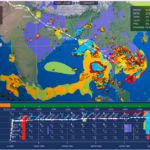
Etihad Airways Pilots Are Using a New EFB Application for Real-Time Weather Updates
Etihad Airways is deploying a new cloud-hosted electronic flight bag (EFB) weather forecasting application across 100 of its in-service aircraft fleet that will give the UAE national carrier’s pilots access to turbulence alerting, areas of icing and other information graphically depicted on tablet screens. The application, EFB Weather Awareness Solution (eWAS), developed by SITAONAIR in partnership with GTD, was trialed by Etihad pilots throughout 2018 ahead of its initial launch in April. A key enabler for pilot use of eWAS is AppsConnect, which is best described as SITAONAIR’s application connectivity cloud-hosted hub, where pilot EFB applications are connected to the proper available connectivity link. As an example, in the air it can route the eWAS need for updated airport conditions at a destination airport with ACARS, or the satellite communications network that an aircraft is equipped with. On the ground, the app is automatically routed to available 3G or 4G networks to update weather forecasting data.
GCAS 2019: Lunch and Airplane Hacking Preview
On Wednesday June 12, 2019, Tim Luck, consultant for Pen Test Partners, will give his “Lunch and Airplane Hacking” luncheon keynote at the 2019 Global Connected Aircraft Summit. Here, Mark Holmes, group content director for Access Intelligence, catches up with Tim to give a brief preview of what he will discuss next week.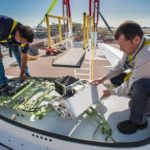
Honeywell Selects Gilat Aero Modem for JetWave System
Honeywell selected Gilat Satellite Networks‘ Taurus In-Flight Connectivity (IFC) modem for its JetWave satellite communication system. The integration of Gilat’s aero-modem aims to enable Honeywell to offer its JetWave solution within territories as well as to roam in-and-out of territories where Gilat’s ground network is deployed. The Honeywell-Gilat solution will first be deployed in China over China’s High Throughput Satellite (HTS) Ka-band network for both domestic and flights going in-and-out of China, expanding later to additional regions around the globe. According to the release, Gilat’s IFC solution operates the largest global IFC network with over 1,000 commercial aircraft installed with Gilat’s solution. “Gilat is pleased to partner with Honeywell to offer JetWave in new territories and regions of the world, and are looking forward to further expansion and cooperation of this strategic relationship,” said Ron Levin VP, Mobility and Global Accounts. “This achievement is another step in materializing Gilat’s vision of enabling broadband anywhere, as well as a testament of Gilat’s recognized global HTS and IFC leadership.”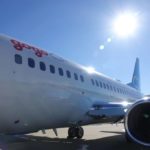
Gogo Plans to Launch 5G Network in 2021
Gogo revealed its plans to build a 5G network for aviation. The new Air-to-Ground (ATG) network will be designed for use on business aviation aircraft, commercial regional jets, and smaller mainline jets operating within the contiguous United States and Canada. Gogo expects the network to be available for business and commercial aviation in 2021. Gogo will build the 5G network on its existing infrastructure of more than 250 towers and will use unlicensed spectrum in the 2.4GHz range, along with a proprietary modem and advanced beamforming technology. Gogo’s 5G infrastructure aims to support all spectrum types (licensed, shared, unlicensed) and bands (mid, high, low), and will allow Gogo to take advantage of new advances in technology as they are developed. Similar to how wireless carriers provide redundancy across their networks, Gogo will continue to employ its 3G and 4G networks throughout the continental U.S. and in Canada that will provide backup to the 5G network when needed. “We expect to launch Gogo 5G at the same time as the terrestrial telecommunications companies are deploying the same generation of technology on the ground – a first in the inflight connectivity industry,” said Oakleigh Thorne, CEO of Gogo. “Gogo 5G is the next step in our technology evolution and is expected to deliver an unparalleled user experience, pairing high performance with low latency and network-wide redundancy.”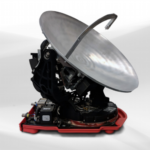
Viasat Introduces New IFC Antenna System
Viasat revealed the availability of its new Ka-band Global Aero Terminal (GAT-5518) to provide In-Flight Connectivity (IFC) services on government and business aviation aircraft — from government-focused Unmanned Aerial Vehicle (UAV) and fixed-wing military platforms to VIP business and corporate jets. The GAT-5518 is the latest satellite communications (SATCOM) product to join Viasat’s portfolio of Ka-band aero antenna systems. The GAT-5518 terminal completed the Federal Aviation Administration (FAA) D0-160G certification process. This certification confirms the terminal’s ability to provide IFC services across the International Telecommunication Union (ITU) Ka-band spectrum, which includes commercial and Mil-Ka frequency bands; across varying polarity layouts; across multiple orbital regimes, including both Medium Earth Orbit (MEO) and Geosynchronous Orbit (GEO) satellite systems; and across multiple network and ground infrastructures. The terminal is also expected to be forward-compatible, enabling it to leverage current and future Viasat satellite systems, as well as operate over third party satellite networks. The terminal is made up of a two-axis steerable, two-way Ka-band antenna with an integrated antenna control unit (ACU), an antenna power supply unit and a modem. The GAT-5518’s antenna can be tail, fuselage or hatch-mounted.
GCAS 2019: The Definitive Preview

A panel discussion from the 2018 Global Connected Aircraft Summit (GCAS). In 2019, GCAS returns to San Diego, at the Hilton La Jolla Torrey Pines, June 11-13, 2019.
When GCAS was launched in 2012, the IFC landscape was dramatically different. Only a few airlines had launched basic services and for many it was still a pipe dream. Today, with most airlines up and running will full IFC services, the question is not so much about getting connected, but what consumers do when they are connected.
So, what will be the major talking points at GCAS this year? Andrew Penn, senior associate at Avascent has some thoughts on what topics WON’T be discussed, specifically industry consolidation amongst major players in the sector. “After years of discussion about the excess of players in this market, consolidation and reshaping has finally begun to take shape,” he says. “From the Panasonic/Inmarsat partnership, to Inmarsat’s pending acquisition by Triton-Bidco (a PE consortium), we are finally seeing the market rationalization that has been called for. The remaining question is how much more consolidation is necessary?”
Penn suspects that the recent 737-Max accidents will be top of mind of attendees. “From an economic standpoint, people will be interested in how the grounding and delayed delivery schedule may impact IFC provider revenues. In terms of safety, it raises the question of whether live sensor monitoring/streaming and big data analytics could play a role in preventing such tragedies in the future,” he says. Penn also expects to hear a lot about the emergence of Low Earth Orbit (LEO) satellites and flat-panel antennas. He says both have been discussed for years, but it seems we may finally be getting closer to widespread adoption.
One of the larger antenna companies represented at GCAS this year will be Phasor Solutions. The company’s CEO, David Helfgott, says there are many interesting developments ranging from the state of the IFC services market to latest technology innovations, and to the advent of the new Non-Geostationary Orbit (NGSO) constellations. “I suspect that these will be among the main topics of discussion at GCAS,” he says.
Helfgott says Phasor is very encouraged by the adoption rate of current state-of-the-art aeronautical satcom antennas and many major commercial airlines, especially in North America and Europe have made this investment. “There is a very large part of the market, and of the world, yet to be addressed including regional jets, Asia-Pacific, Middle East and Africa, and South America,” he says. “The current ‘state-of-the-art’ is heavy, mechanical and does not take full advantage of the opportunity of today’s market or the market that is to come.”
Phasor is very confident that a solid-state, electronically steered, multi-beam antenna will provide a superior connectivity experience for airlines, service providers and also passengers as the industry moves to future high-throughput Geostationary Orbit (GEO) satellite and wideband Low Earth Orbit (LEO) satellite services.
Viasat has made its presence felt in the IFC market over the last few years. With its high-powered satellites, the operator has signed service deals with airlines such as Qantas, American Airlines, JetBlue, and SAS. Don Buchman, Vice President and General Manager of Commercial Aviation for Viasat, outlines some of main topics he expects to see discussed at GCAS based on recent discussions with airlines. “Firstly, one issue I expect to see discussed is how to bring a seamless In-Flight Connectivity (IFC) experience to passengers across a multi-vendor IFC fleet,” he says. “Secondly, I expect to hear about how to monetize the IFC service — transitioning IFC from a cost-center to a profit-center — looking at sponsored access partnerships. Finally, I think there will be a discussion around IFC as a backbone tool to enhance operational services.”
Similar to the satellite industry at large, the IFC business is also at an inflection point. Connectivity is no longer the shiny new thing, and most consumers are expecting much more out of their in-flight media experience. Still, Buchman believes that capacity is king — and that it needs to be cost-effective for the airline. “The more capacity you have — at the right cost — enables airlines to offer better services,” he says.
Helfgott talks of the inability of some service providers and airlines to provide enhanced experiences, and thus this has created, in some cases, negative feedback. “In the cases where the right satellite capacity and the right access technology are offered together, the passenger experience has been exceptional and so has the adoption rate,” he says. “We see this as the first step towards the future of connected aircraft where there will be a multitude of satellites and options and only the most agile and dynamic access technologies will empower airlines to offer that level of service globally.”
LEO Satellites: Ready for Prime Time in IFC?
With thousands of LEO satellites set to be launched over the next few years, many wonder if they can provide benefits to the IFC market. Penn says, “Even with constellations like OneWeb now into their launch campaign, many questions remain: Will electronically steered antennas be ready and at an affordable price point? Will airlines be willing to take their fleets outs of service to swap-out existing hardware for new LEO kit? Will the added capacity address shortfalls in hotspot regions where it is most needed? While OneWeb claims seven Tbps of global throughput, much of that will be lost over oceans and the poles. Other constellations have different approaches, but don’t have the funding. And then there is Amazon, where funding presumably won’t be a problem. However, they’ve shared very few details of their system.”
Buchman, while welcoming new entrants into the market, believes we are far away from LEO constellation operators making a strong impact. “Specific to LEOs, their constellations are years away from launch; their focus on IFC is unclear; and while they tout lower latency as a strength, this is virtually a non-issue in the air for GEO providers. We’re proof of that,” he says. “We can do high-speed streaming video and audio, web browsing, and more — and at scale.”
Helfgott however, believes LEO systems could be transformational for the IFC industry. He says, “The increase in available bandwidth in general, especially over remote locations poorly served by GEO satellites, means that we will finally have ubiquitous, global broadband connectivity. This will be transformational for IFC service providers, for airlines and for passengers, especially for those traversing the Polar routes.”
AI and Future Applications
This year’s GCAS event will feature its first panel looking at Artificial Intelligence (AI) and Machine Learning (ML). Speakers from Airbus, Boeing, IBM and Google will participate in a discussion about the impact AI could have in the IFC market. “Will AI radically change the market — it’s too early to tell today,” says Buchman. “But I would suspect all IFC vendors are using some form of these technologies today for capacity planning, key passenger learnings, operational cloud-based activities and more.”
Penn, however thinks, ML/AI applications are still a way off for IFC. “The most likely applications would focus on aircraft maintenance and monitoring for anomaly and failure prediction. If we can intelligently identify the right data to pull off a plane, that could open the door to entirely new Maintenance, Repair, and Overhaul (MRO) concepts,” he adds.
Penn believes the market is in place where the transition from “land-grab” to execution is well under way. “My hope going forward is that providers are able to deliver on their tech-roadmaps and deployment schedules so that the majority of the world’s commercial flights are connected by 2022. A “stretch goal” would be electronically steered antennas deployed on aircraft at a comparable, if not better, price point than their mechanically steered counterparts. And lastly, as alluded to before, a bit more consolidation in the industry would bring stability to more providers and airlines alike,” he says.
GCAS will also dive into network and passenger data protection. At Via Satellite’s 2018 CyberSat Summit, Ken Munro, Partner at Pen Test, spoke of the growing cyber threat to the satellite industry, as well as common vulnerabilities related to the shipping and maritime sector. At this year’s GCAS, he will give a keynote about similar threats in aviation. We will also have Jessica Ferguson, Chief Information Security Officer (CISO) of Alaska Airlines hosting an exclusive workshop/interactive session looking at cyber issues.
Our passenger experience panel will feature a number of major airlines such as Etihad, WestJet, and Aeromexico. To add a bit of variety to the panel, John Padgett, Chief Experience Officer of Carnival Cruises, and a key influencer within the cruise sector, will also join the panel. Our opening IFC influencers panel at GCAS will feature executives from SmartSky Networks, Delta, Southwest, JetSuiteX, Qatar Airways, and CNN, among others. The satellite industry is also well represented at the event and we have great speakers from the likes of SES, Intelsat, Viasat, Phasor, Honeywell, and Cobham.
The 2019 GCAS event is our biggest and best yet. We will have enhanced networking opportunities that provide the satellite industry and others with more quality time to discuss issues shaping the in-flight industry.

A Few Reasons Why Airlines Should Attend GCAS 2019
Are you an airline wondering why you should attend the 2019 Global Connected Aircraft Summit? Check out a few reasons why the editors of Avionics and Via Satellite believe you should attend!
